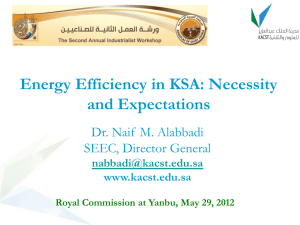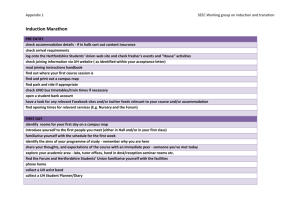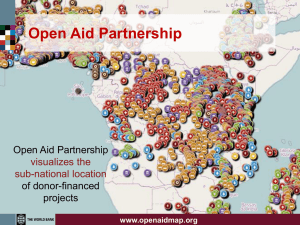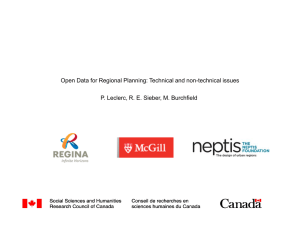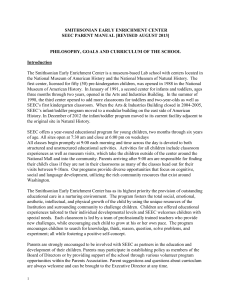SEEC Project Proposal here
advertisement
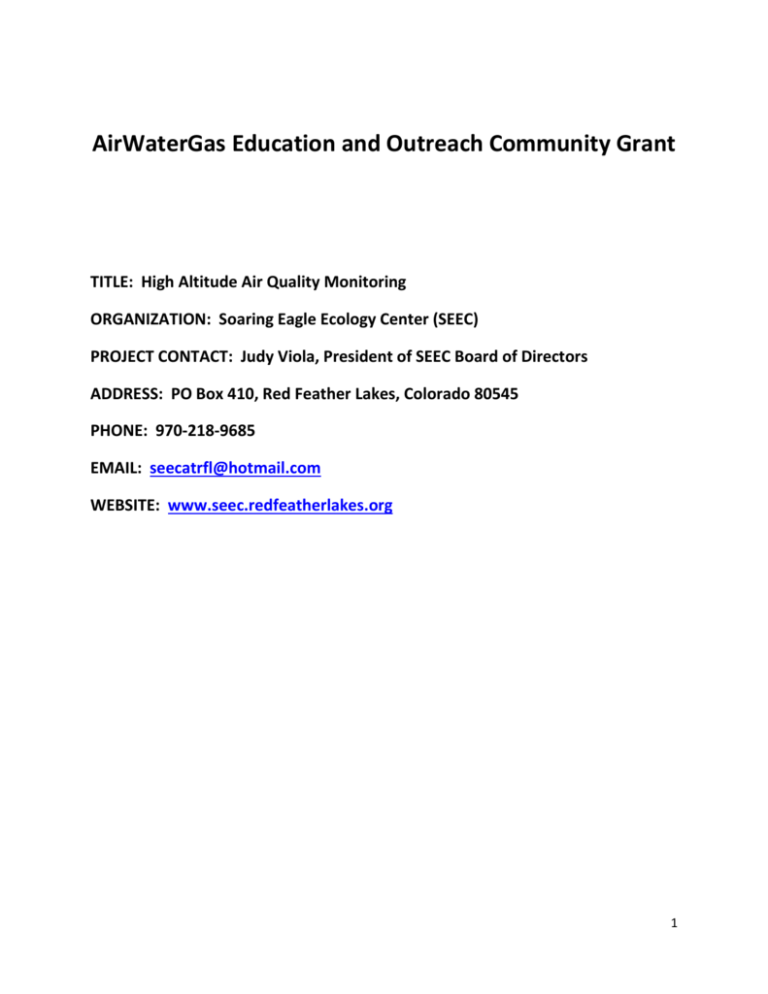
AirWaterGas Education and Outreach Community Grant TITLE: High Altitude Air Quality Monitoring ORGANIZATION: Soaring Eagle Ecology Center (SEEC) PROJECT CONTACT: Judy Viola, President of SEEC Board of Directors ADDRESS: PO Box 410, Red Feather Lakes, Colorado 80545 PHONE: 970-218-9685 EMAIL: seecatrfl@hotmail.com WEBSITE: www.seec.redfeatherlakes.org 1 PROJECT DESCRIPTION: Soaring Eagle Ecology Center is honored to submit our High Altitude Air Monitoring Project for funding consideration through AirWaterGas Education and Outreach Community Grant. This grant proposal is a wonderful collaboration of residents, students, and organizations from two rural communities (Red Feather Lakes and Livermore) with guidance and expertise from the AirWaterGas Project. SEEC is excited to lead our community’s efforts in learning more about air, water and natural gas connections, and organizing community and student citizen scientist programs focused on air quality monitoring. Project Goal 1: To develop an increased understanding of community citizen scientists’ role with air quality monitoring at sites within Red Feather Lakes and Livermore. Objective: Educate and disseminate information in Red Feather Lakes and Livermore communities about volunteer opportunities with Air Quality Monitoring Citizen Scientist project. (March 2015 – May 2015) Objective: Train citizen scientist volunteers on POD air monitoring equipment with AirWaterGas graduate student(s). (by mid-June 2015) Objective: Develop POD monitoring rotation schedule for 2 to 3 sites at various elevations (7,000 – 8,400 feet) and start using POD equipment to monitor multiple pollutants such as CO2, O3, VOCs(June 2015 – July 2015) Objective: Continue rotation of air quality monitoring using community citizen scientists. (July 2015 – January 2016) Objective: Submit final report due by February 1, 2016. SEEC would like to continue this project on an on-going basis. (February 2016 and beyond) Project Goal 2: To increase elementary students’ awareness and participation in student citizen scientist monitoring project of particulates in the air at elevation of 8,400 feet. Objective: Develop a project-based, hands-on program for 4th/5th grade students focused on air quality and air pollution. (March 2015 – June 2015) Objective: Develop and fine-tune simple visibility gauges students can use with Peak-to-Peak app on SEEC land. (June 2015 – July 2015) Objective: Test SEEC pollution samples and particle counts over summer with students in SEEC summer programs. (June 2015-July 2015) Objective: 4th/5th grade students at RFLE School will pilot air quality program and monitoring as part of student citizen scientist program. (August 2015 – November 2015) Objective: Lesson plans will be submitted with final report by February 1, 2016 Objective: Students will create short video as part of after-school project. 2 Objective: SEEC plans to continue the student citizen scientist air monitoring program on an on-going basis. (February 2016 and beyond) Project Goal 3: To increase community and student awareness and understanding of AirWaterGas overall project and its relevance to air and water quality within our rural community. Objective: Develop new trail on SEEC land with learning/interpretative signs related to AirWaterGas project and geology/energy connection. (April 2015 – November 2015) Objective: Schedule 1 - 2 speakers from AirWaterGas Project for community programs on AWG Project and related topics. (June 2015 – September 2015) Objective: If available, schedule 1 speaker from AirWaterGas to share information with elementary students at RFLE School. (September 2015 – November 2015) PROJECT LEAD ORGANIZATION AND PROJECT PARTNERS: Soaring Eagle Ecology Center (SEEC): SEEC is the lead organization for the High Altitude Air Quality Monitoring Project. SEEC is a 501(c)(3) charitable, nonprofit organization whose primary purpose is to teach hands-on, inquiry-based environmental education for learners of all ages. SEEC is located on 20 acres directly south and west of Red Feather Lakes Elementary School and adjacent to Roosevelt National Forest. At 8,400 feet in a montane forest environment, SEEC has a perfect setting for outdoor environmental education. This educational nonprofit uses this unique ecosystem to achieve its vision and mission. The vision of SEEC is to inspire and facilitate children of all ages to learn about, enjoy and encourage responsible stewardship of the environment. The mission of SEEC is to offer hands-on, outdoor education to promote understanding and appreciation of the natural world. SEEC is an organization powered by volunteers and does not charge for any of its programs. In 2014, over 1,100 children, teens, families and adults attended SEEC programs and presentations. As the project’s lead organization, SEEC will organize the citizen scientist air monitoring at SEEC in Red Feather Lakes (8,400 feet) and on private land in Livermore (7,100 feet). The air quality monitoring will be facilitated by citizen community members from both locations using the POD equipment. SEEC volunteers will also organize and supervise simpler air quality monitoring by student citizen scientists on SEEC land using visibility gauge tools and pollution samplings (counting particulates). All recording of data and trends will be kept by 3 SEEC. SEEC will also take the lead on scheduling and advertising speakers for Geology and Energy, Air Quality Monitoring and Training for the community and citizen scientists. SEEC will develop and facilitate student programs on Air Quality Monitoring, Basic Geology, NonRenewable Energy – GAS and Air Pollution and Air Pollutants. Cooperative Institutes for Research in the Atmosphere (CIRA): Julie Winchester, a research associate with CIRA and the National Parks, will serve as consultant and facilitator for the student citizen scientist program. Red Feather Lakes Elementary School (RFLE): RFLE is an elementary school that is part of Poudre School District. SEEC and RFLE School collaborate frequently with science enrichment and environmental programs. Matt Marietta, principal of the three mountain schools, and Kasey Ross, 4/5 teacher at RFLE, have agreed and are excited to be part of this citizen scientist project. Students and teachers at RFLE will be participating in student programs and air quality monitoring as well as providing critical feedback for the project. The school has also committed to collaborate with SEEC on this project going forward. Red Feather Lakes Community Library (RFLCL): RFLC Library has a MOU agreement with SEEC to provide a venue and advertising for SEEC programs and presentations when electricity is needed. Although SEEC has outdoor classrooms, there is no electricity available on SEEC land and our local library offers a perfect location for Power Point presentations that SEEC plans to schedule for the general community. PROJECT’S INTENDED AUDIENCE: There are a number of components to our project, High Altitude Air Quality Monitoring that may have different targeted audiences. o Part One focuses on Citizen Scientists’ Air Quality Monitoring programs. One of the programs will monitor air quality using the POD at two to three separate locations (SEEC at RFL and Livermore) using high school students and adults volunteering as citizen scientists. There is a great interest in both communities to help with these volunteer programs and SEEC would email and post flyers and informational meetings about the volunteer programs and POD training. SEEC will also post information on Poudre School District’s Share-It web page to attract high school teachers and students to this project. The student citizen scientist part of the program will be led by SEEC and RFLE teachers and students during the school year and incorporated into the free summer children programs offered by SEEC. These 4 summer programs intended for elementary and middle school students will be advertised on SEEC website, North Forty newspaper, emails and posters/flyers. o Part Two includes programs and presentations that are targeted for a variety of ages from children through adults. SEEC plans to invite speakers to talk on a number of subjects dealing with the Geology-Energy Connection, Air Water and Gas that would be appropriate for high school students and adults. Student and children programs on Air Quality, Air Pollution and Basic Geology would be suitable for elementary and middle school students. These programs would be developed as outdoor programs that are inquiry-based and hands-on. SEEC outdoor classrooms would be ideal. The programs would be advertised on SEEC and RFLC Library’s websites, North Forty newspaper, email lists and flyers posted throughout the community. PROJECT OUTCOMES AND ASSESSMENTS/EVALUATIONS: Intended outcomes and assessments for those participating in High Altitude Air Monitoring Project will vary depending on program and age. Part One of the project focuses on community citizen science air quality monitoring using POD air monitoring equipment developed for AirWaterGas Project, as well as student citizen scientist program measuring visibility with gauges developed for students by CIRA. Outcomes for high school and adult volunteers participating in the community scientist air monitoring program are as follows: o Volunteers can identify the different parts, calibrate and run the POD air quality monitoring equipment. o Volunteers can identify the multiple air pollutants that are being monitored. o Volunteers can explain the importance of the pollutants that are being monitored and their relationship to natural gas exploration and development. o Volunteers can explain the importance of citizen scientist programs Outcomes for elementary students participating in the student citizen scientist program on visibility are as follows: o Students can explain the term visibility. o Students can demonstrate accurate use of visibility gauges to measure visibility. o Student s can record visibility data on project data log. o Students can explain the importance of citizen scientist programs 5 o The above outcomes will be written in each student’s science journal. Part Two concentrates on Air Water Gas Project and Geology programs for the community and Air Quality, Air Pollution, Basic Geology and Energy programs for 3rd, 4th. and 5th grade elementary students. Community informational programs and presentations will be evaluated with the following informal methods: o Number of community members who attend the programs and presentations (measure of interest in the topic). o Directly after program, ask participants to complete brief program survey with questions such as: What did you learn today? What did you enjoy most about the program/presentation? How would you improve the program? What topic would you like to study in more depth? Elementary student programs on Air Quality and Air Pollution (may include other programs listed above) will be evaluated as follows. o Brief pre- and post-tests. o Student self-reflections in science journals on student learning targets as listed in lesson plans submitted with final report.. PROJECT BUDGET: Soaring Eagle Ecology Center respectfully requests $3,215 for our High Altitude Air Quality Monitoring Project. The requested funding from this grant will be used for the following: Item Cost per Item or Hour Total POD Air Monitoring Equipment $1,000 $1,000 Learning Sign Outdoor Frames (6) $65/sign x 6 $ 390 Building Frame Mounting Systems (6) $40/sign x 6 $ 240 Research and design signs (6) $25/hour x 6 $ 240 Print color 22”x28” vinyl signs (6) $70/sign x 6 $ 420 Installation including rental drills (6) $50/sign x 6 $ 300 Develop air quality lesson plans (4th/5th) $25/hour x 6 $ 150 Present basic geology program $25/hour x 6 $ 150 6 Develop/present energy program (kids) $25/hour x 6 $ 150 Develop short video $25/hour x 3 $ 75 Miscellaneous supplies for student programs (paper, markers, tape, copies) Total from AWG Grant $ 100 $3,215 High Altitude Air Monitoring Project will also be utilizing the following SEEC funds, in-kind donations and volunteers to complete this project. Build new trail on SEEC land for learning signs Volunteer labor Build wooden beetle kill benches (6) $ 300 (SEEC funds) $50/bench x 6 Install wooden benches around new trail (6) Geology-Energy speakers adults/teens Volunteer labor Professor (UWYO) No charge Community citizen scientists (POD) Volunteers SEEC volunteers for programs Volunteers SOARING EAGLE ECOLOGY CENTER’S EIN NUMBER: Soaring Eagle Ecology Center is a 501(c)(3) nonprofit and received its IRS Letter of Determination on March 9, 2011 with the effective date of exemption November 15, 2010. EIN # 65-1321376 PARTNER RESOURCES FROM AirWaterGas FACULTY AND STUDENTS: SEEC’s planned project, High Altitude Air Quality Monitoring, would enthusiastically invite and benefit from the resources and expertise of the AirWaterGas faculty and students. Part One of our project has an emphasis on air quality monitoring using the POD. A preliminary survey of both Livermore and Red Feather Lakes (where SEEC is located) shows an interest with community members in volunteering as citizen scientists to measure air quality in their specific areas. Many are retired scientists with graduate degrees in a wide variety of fields including biology, physics, geology, and engineering. There are also high school students who have 7 expressed interest in being part of this volunteer citizen scientist team. It is critical that everyone helping with the air quality monitoring be trained by an AirWaterGas faculty member or student so the same information about the POD is heard by all. It would also be great if the trainer could serve as consultant, especially during initial implementation, to answer any questions or concerns our team may have. The simpler air quality monitoring that the elementary students will participate in is an expansion of a Clean Air Project (CAP) grant that SEEC received last year from National Jewish Health and will be supervised by SEEC and CIRA volunteers. SEEC would also like to invite AirWaterGas speakers to facilitate programs for the whole community. Many residents in our area are highly interested in topics affecting air, water and the environment and would like to know more about your overall AirWaterGas Project, including its goals and objectives. Although SEEC’s local proposed project concentrates on air quality, we would also welcome speakers and programs on water (our area uses well water) and the connection between gas production/use and quality of air/water now and into the future. SEEC will be developing programs for elementary and middle school students – if there are grad students who like to work with elementary-aged students, we would love to have them come to SEEC and RFLE School as well. If SEEC is fortunate to receive a AirWaterGas Education and Outreach Community Grant, as part of the final report, we will send lesson plans on air quality and measuring particulates in the air for 4th/5th grade students to share with other schools and student groups. SEEC will submit a short video made by the students demonstrating their student citizen scientist project with monitoring particulates in the air. SEEC will also be sharing the community citizen scientist results/trends as well. Thank you so much for allowing Soaring Eagle Ecology Center the opportunity to submit this grant proposal to the AirWaterGas project. 8
